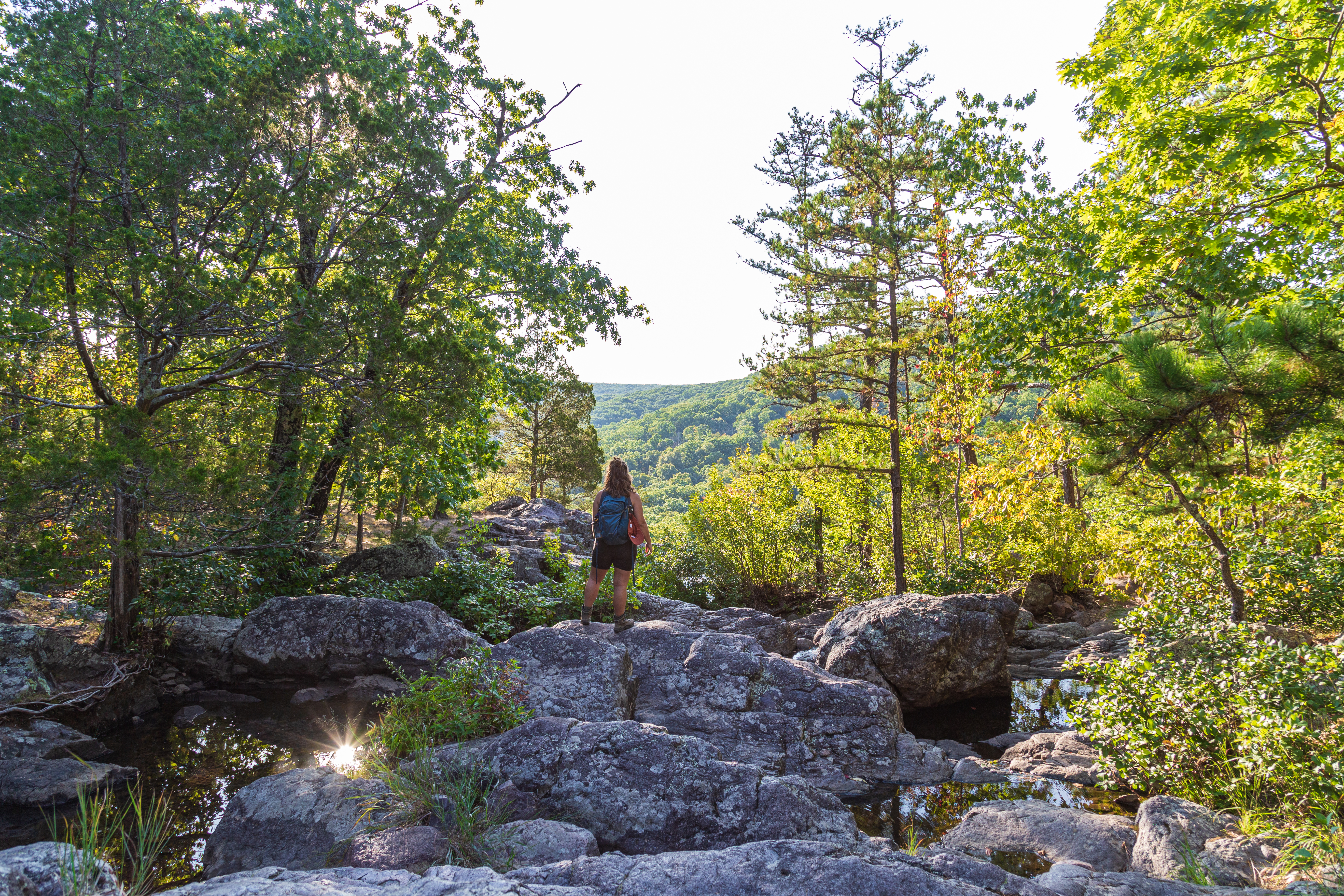Any outdoor or nature enthusiast will want to check out Harry S. Truman State Park. This 1,440-acre park is one of Missouri’s finest reservoir-based state parks. There is fishing, boating, camping, and hiking galore. And trails wind through the woods and out to rocky overlooks. Make a plan to visit today!
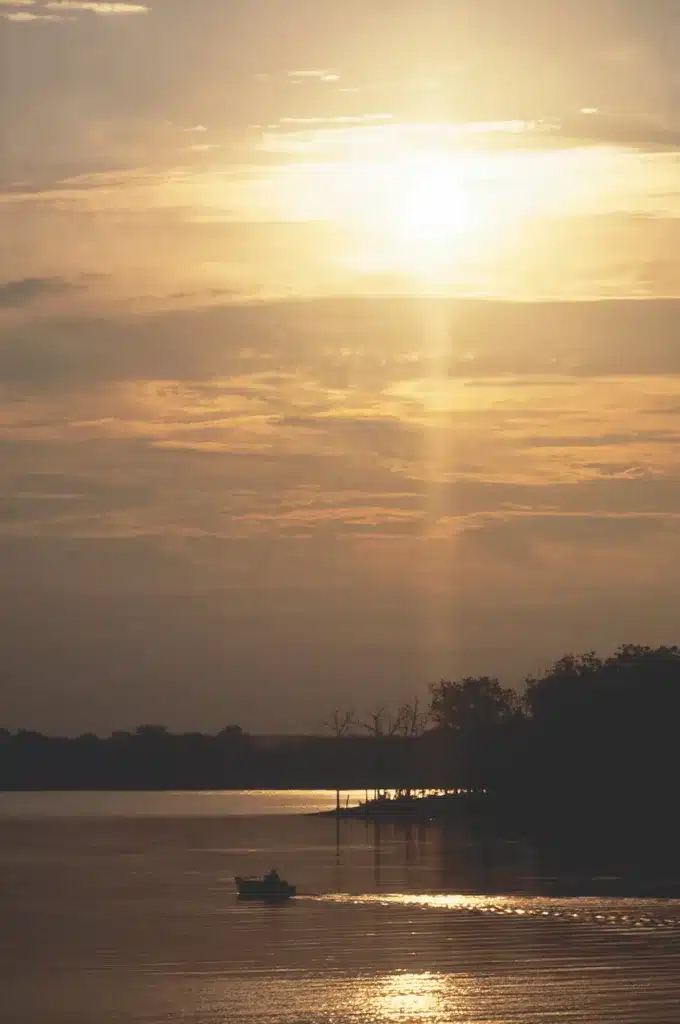
Photo by Nick Decker
THE VISITOR ARRIVING BY CAR at Harry S. Truman State Park meanders for miles along the curvy spine of a narrow ridge. Closer to the park, steep valleys alternating on either side of the road provide nickelodeon glimpses of Truman Lake in the distance. A great bend of the Osage River has created a long peninsula so pinched at one point that one can see the lake reaching close through valleys on both sides. Suddenly the park entrance appears, and the landscape opens into upland prairie. One now has a choice, as the road splits to follow two different prongs of the ridge. Along its outer margins, as seen either from a vehicle through winter’s leafless woods or from a boat nosing into U-shaped coves, the undulating ridges of the peninsula end abruptly in steep bluffs or sheer cliffs.
The landscape and culture of the upper Osage basin is complex and diverse. The basin lies primarily on the Springfield Plateau of the Ozarks, with some headwaters in the tallgrass prairie country of eastern Kansas and western Missouri. In the vicinity of the dam site, the Osage valley is deeply cut and surrounded by rugged, mostly tree-clad terrain. Glade openings are frequent and help support abundant wildlife.
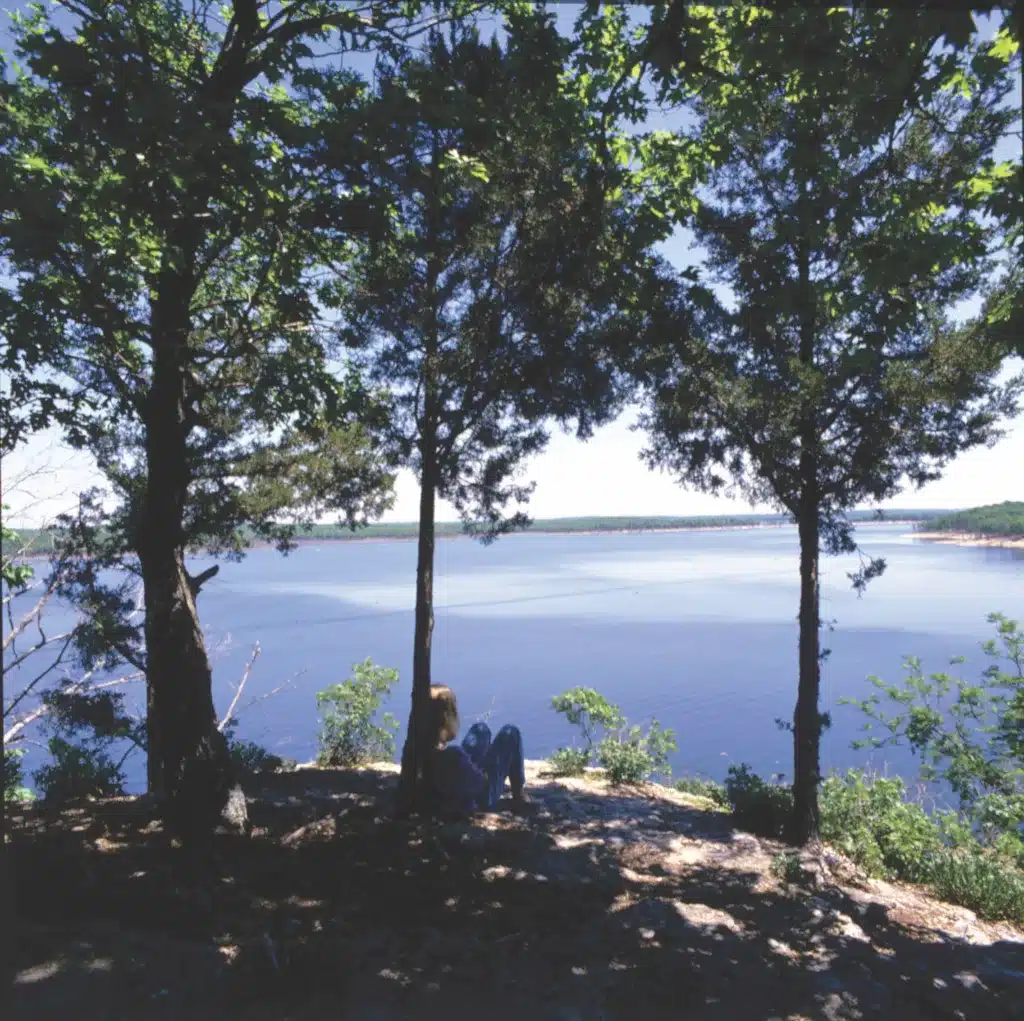
Photo by Nick Decker
Early natives probably hunted Ice Age mastodons and ground sloths here. The famed Rodgers rock shelter south of Warsaw, which revealed some ten thousand years of nearly continuous occupation by Native Americans, has water lapping into it at full pool. Subsequent native people, the Osage, gave their name to the river. A powerful and far-ranging tribe, the Osage played a key role in the early fur trade and exploration conducted by Frenchmen such as Charles du Tisné who led an expedition through the area in 1719. American pioneers began permanent settlement in the 1830s.
In the 1840s, a protracted series of fights between outlaws and vigilantes came to be known as the Slicker Wars after the habit of one side to strip and whip, or slick, the bare backs of their captured foes with hickory switches. Although the area was overwhelmingly southern in background, the Civil War brought divisions of allegiance and murderous guerrilla warfare. The town of Osceola, seat of neighboring St. Clair County, was probably most notable in this regard. In 1861 the notorious Kansas jayhawker and later US senator from Kansas, James Lane, descended upon Osceola, plundered everything of value, and then burned the town to the ground. It was in retaliation for this Union atrocity that the far more widely known raid by Missourians on Lawrence, Kansas, took place in 1863. Much of this basin’s history and prehistory, plus a good deal of Army Corps of Engineers showmanship, is displayed at the corps visitor center perched atop Kaysinger Bluff.

Photo Courtesy of Missouri State Parks
The corps leased the parkland to the state, and the park, which opened in 1983, is well run and highly attractive. The 1,440-acre park consists of a two-lobed peninsula jutting into the central part of the lake close to Truman Dam in Benton County. Park planners took advantage of a superb location and easily controlled access to create one of Missouri’s finest reservoir-based state parks. There are abundant, tidy campsites, clean sand beaches, shady picnic areas, convenient boat launches, and a fully equipped marina. Fishing, sailing, and pleasure boating are all popular, and trails wind through the woods and out to rocky overlooks.
Perhaps because of the park’s semi-isolated peninsular setting, wildlife is not threatened and allows close observation. It is not uncommon to see deer, wild turkeys, fox squirrels, and cottontail rabbits feeding along the grassy shoreline near the campground beach. In the winter, numerous bald eagles roost on the tall limestone bluffs bordering the lake.
Truman State Park captures the character of both the prairies to the west and the Ozark woodlands to the east. Fires once swept across the Osage Plains from the west, at times likely set deliberately by Native Americans to stimulate ground flora and direct wildlife movements for hunting, with the result that the fires’ frequency and intensity inhibited the growth of trees on the plains. But in the deeply dissected hills along the entrenched Osage River and its tributaries where Truman State Park is located, the fires burned with less intensity. North-shaded slopes and steep valleys gentled the fires often enough to allow oaks to flourish in a relatively open setting. By 1980, however, after decades of effective fire suppression, portions of the park had become dominated by red cedar and oak thickets. Beneath these thickets under a blanket of leaf debris, diminutive prairie plants and small clumps of native grasses barely survived, kept alive by their well-developed root systems and just enough light. It was a perfect setting for prescribed fire, which park naturalists began in the early 1980s and still continue.
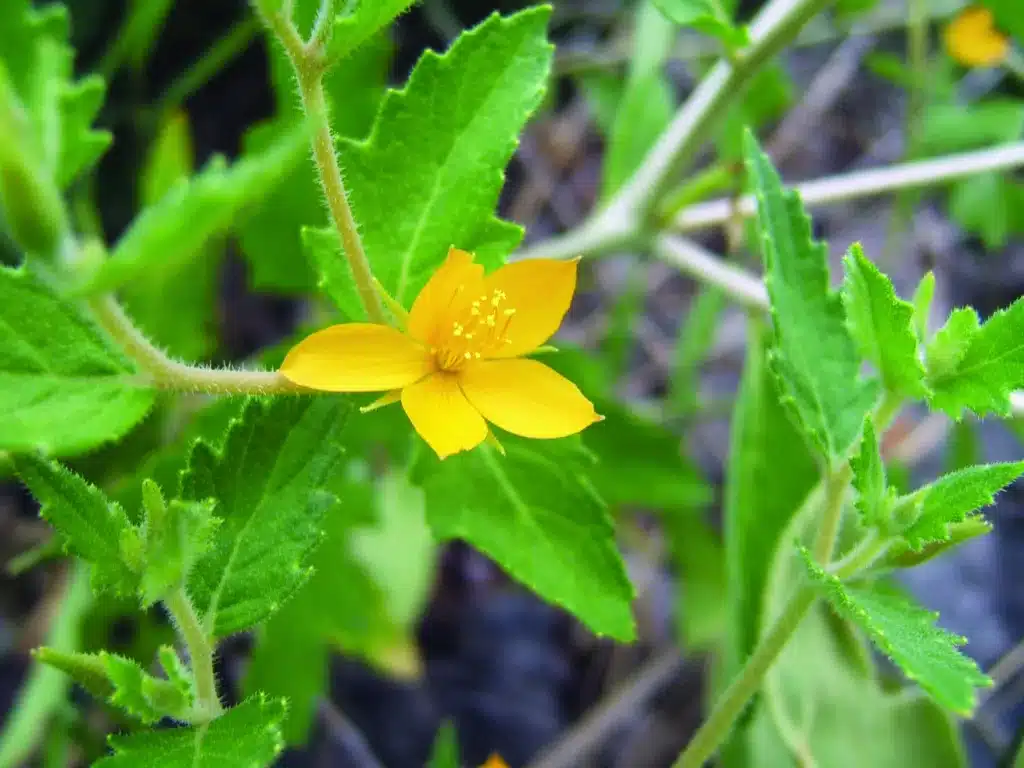
Photo Credit: Allison Vaughn
Today, widely spaced oaks once again shade a mantle of prairie grasses and wildflowers. The brilliant orange beauty known as western wallflower dots the limestone barrens here in May and June. This member of the mustard family and other species such as stickleaf, Missouri spurge, and plains muhly occur in no other state park. Thanks to the fossiliferous limestone and dolomite exposed throughout the area, a dense cover of the small, single-leaved adder’s-tongue fern blankets the ground in spring. This tiny fern owes its name to a serpent-like fruiting stalk protruding from its single leaf. When you enter the park, you drive for several miles through a beautifully restored landscape.
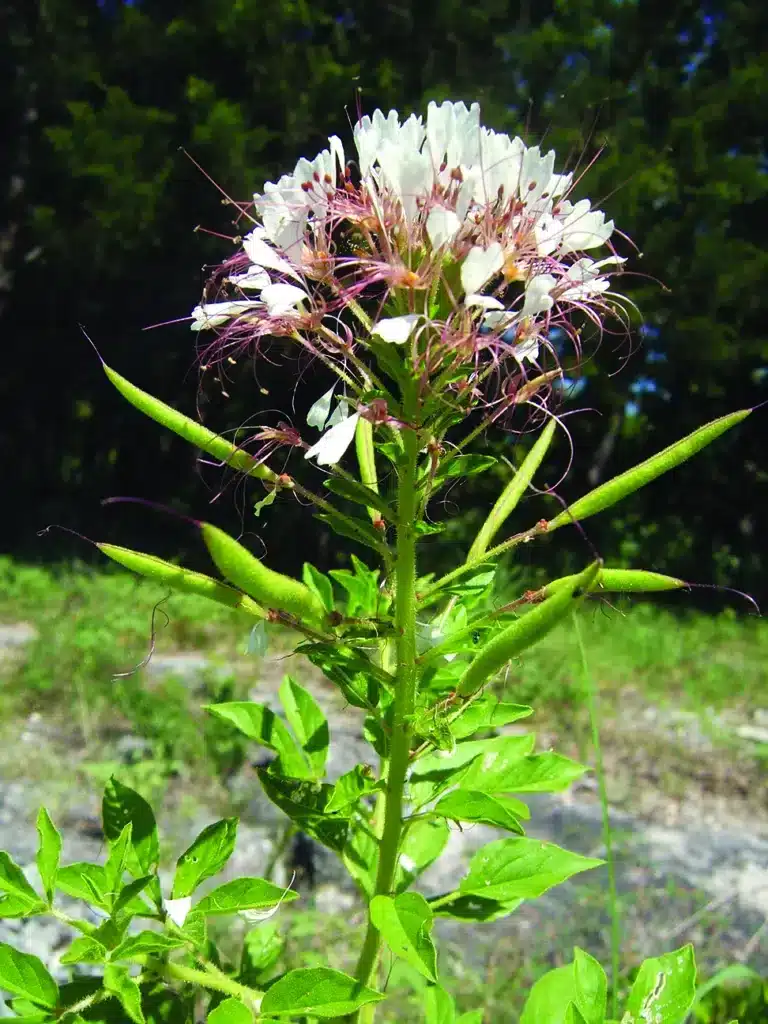
Photo by Allison Vaughn
It is somehow fitting that this superb park, which anchors the reservoir on the Osage River named for the only president from Missouri, should once again exhibit an oak woodland and prairie landscape like the one here when Osage Indians hunted the area or when Harry Truman was born not far from here.
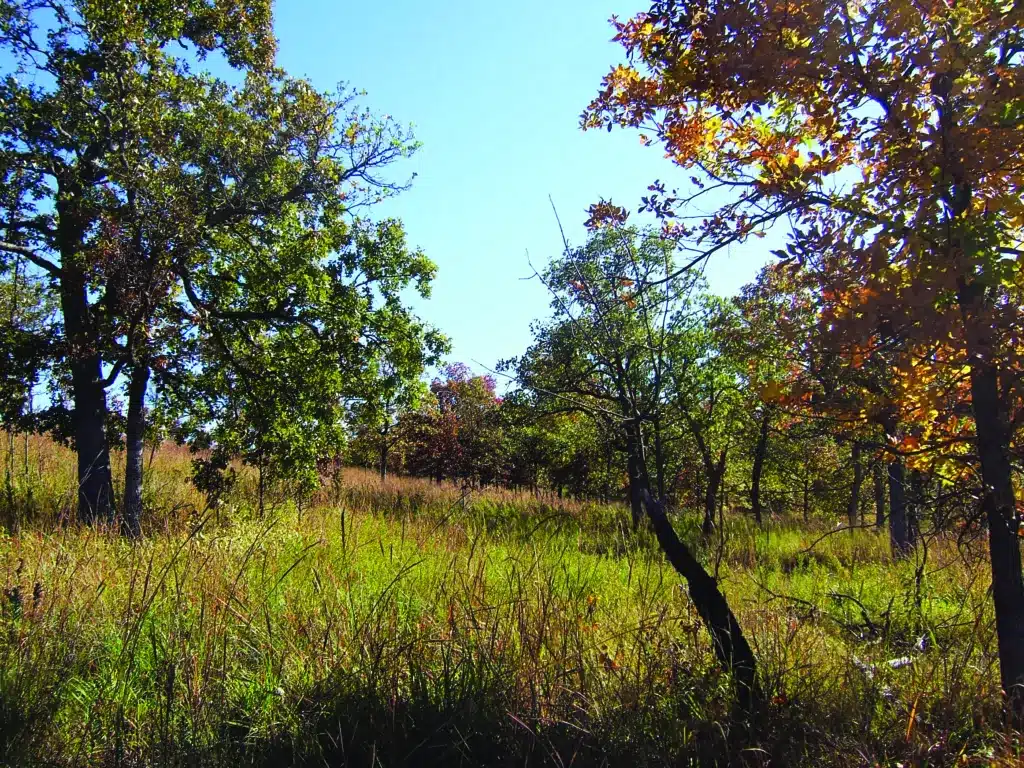
Photo by Allison Vaughn
THE CONTROVERSIAL DAM AND RESERVOIR
This idyllic park is an outcome of a hotly contested dam and reservoir project in a region of the state no stranger to controversy. The Osage River was dammed for the first time in 1931 by a private utility corporation, Union Electric of St. Louis. The resulting reservoir, Lake of the Ozarks, backs up from Osage Beach more than fifty miles west nearly to Warsaw. Some years later, the Army Corps of Engineers proposed a second dam at Warsaw, and the Flood Control Act of 1954 authorized Kaysinger
Bluff Dam and Reservoir as part of a larger scheme for flood control in the Missouri River basin. In 1962 the purposes of hydroelectric power and recreation were added to the project, and construction began in 1964. Along the way the name of the project was changed, perhaps as a public-relations gesture, from Kaysinger Bluff to Harry S. Truman Dam and Reservoir.
The project was truly gargantuan. The new reservoir would permanently cover 55,600 acres in four counties, about the size of Lake of the Ozarks, but at full pool it could flood more than 200,000 acres, much of it farmland. The waters would consist of the backed-up flows of several major streams, including the South Grand, the Pomme de Terre, the Sac, and the Osage itself. More than four thousand archaeological sites along the rivers would be submerged, and several thousand families dislocated. The opposition was strong, but belated and ultimately unsuccessful, and in December 1979, Truman Dam generated its first kilowatts of hydroelectric power.

HARRY S TRUMAN STATE PARK • 28761 STATE PARK ROAD, WARSAW
Order Missouri State Parks and Historic Sites book here.
Read about our editor’s trip to the remodeled Harry S. Truman Library here.
Related Posts
Missouri State Library Established
On January 22, 1829, the Missouri State Library was established in Jefferson City.
July 6, 1957
On this date in 1957, the Harry S. Truman Library opened in Independence.

